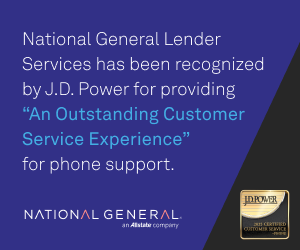This piece originally appeared in the May 2024 edition of MortgagePoint magazine, online now.
It is a hard time out there for real estate professionals. The main impact of the Fed’s interest rate hikes is that capital is harder to come by. That has resulted in credit standards tightening, and fewer transactions being conducted in the market. According to CBRE, commercial real estate volumes were down 54% through Q3 2023). As has been reported thoroughly, this will be a problem for people who are not well-positioned to weather this storm.
In 2021-2022, many investors purchased properties at high prices, using two- and three-year bridge loans. They underwrote these deals with aggressive rent growth and price appreciation assumptions, which matched with cheap capital, and allowed for record prices. Now, they must find a way to meet their obligations, which they took on by promising to achieve these aggressive assumptions.
When their two- and three-year loans come due, they will have to refinance or sell their properties in an environment where capital is scarce and expensive (if available at all).
Meeting their mortgage and investor obligations will be difficult for these aggressive operators. Some will make it … yet many will underperform, and when their high-leverage debt obligations come due, they will have no choice but to recapitalize by paying down their existing loans or selling at prices in line with a more capital-starved market. When this happens at a large scale across the market, it is called “deleveraging.” After deleveraging has happened and leverage rates in the market grow in line with current growth expectations, reflation, and price appreciation can once again proceed.
There are many buying opportunities in a deleveraging, however, the capital to allow for this deleveraging will have to come from somewhere, and it will not be traditional banks. It typically comes from prudent investors who are well-positioned to take advantage of an environment like this.
There are many of these investors out there who have low leverage, cash-flowing properties with low interest rate debt locked in place. Many of them are buyers, but they are underwriting deals based on the new interest rate and pricing reality in the market. This is a reality that many sellers are unwilling to accept unless they are forced to.
Biggest Risks in the Current Market
If you are a buyer in the current market, the good news is that downturns are typically the best time to buy if you are able to hold onto your property until more normalized market conditions have returned.
However, holding on until the market has stabilized is not a foregone conclusion. Here is a list of risks to consider:
- Property condition: Issues such as structural defects, environmental hazards, or unexpected maintenance costs can pose significant risks. Many current sellers have begun a renovation, but have run out of money prematurely as inflation has caused cost overruns and capital is less available to fund shortfalls. These sponsors may skip steps and cover up shoddy work. Thorough due diligence, including property inspections and assessments, and adequate cash reserves are crucial to identify and address potential concerns.
- Supply and demand dynamics: We are coming off of a construction boom where record numbers of units were built in the aftermath of the pandemic, and are delivering now and will continue to do so in the coming months. As developers deliver units, they will be motivated to fill up their buildings, even if it means cutting rents in order to do so. Oversupply of properties in a given market can significantly impact the ability to maintain higher rents, occupancy, and, ultimately, property values. Understanding what other properties are coming online and targeting similar renters in your market is essential for making informed investment decisions.
- Interest rate changes: Interest rates play a crucial role in real estate financing, and rates are higher today than in many years. This increase in interest rates will lead to higher exit cap rates when you go property values today as buyers need lower all-in costs in order to make a return with higher expected interest expenses and higher expected final exit cap rates if we are in a “higher for longer” environment. Investors should conservatively underwrite how interest rates will affect their investment.
What Should Investors be Considering When Purchasing
- Capitalization: The biggest mitigant to all of these risks is having the right capital stack. Having moderate leverage and adequate liquidity reserves will allow an investor to weather market volatility or any capital requirements that come along. Particularly having fixed-rate debt, with plenty of time before maturity and adequate reserves to manage the inevitable surprises.
- Location, location, location: The adage holds true that location is critical to real estate investment success. Consider the property’s proximity to amenities, transportation, schools, and employment hubs. Research the neighborhood’s growth potential and overall desirability. Well-located assets will typically always have buyers. Now is the time to look for premium locations at more reasonable prices.
- Market pricing and financial analysis: The best way to mitigate risk is to buy at a low basis relative to other properties in the market, and to buy at a price where your income at current market rents can generate adequate cash flow even with current mortgage rates. That way, even if market prices drop in the meantime, you will be able to maintain operations until conditions become more favorable.
- Understand your risk tolerance and execution capabilities: Define your risk tolerance and investment goals before shopping for properties. Do you seek to renovate a property to generate short-term gains, or would you like to purchase a stable property for long-term stability? That will guide your property selection and investment strategy. Be honest with yourself about your ability to execute on and tolerate the risk inherent to renovations or a value-added business plan.
- Establishing an exit strategy: Develop a clear exit strategy before making an investment. Whether it is selling a property for capital gains, refinancing, or holding a property for rental income, having a well-defined exit plan with conservative cap rate assumptions will help you make informed decisions throughout the investment lifecycle.
- Network and build an expert team: Build a team of real estate professionals, including real estate agents, property managers, and construction experts. Seek advice from experienced investors who can provide valuable insights based on their own successes and challenges.
Conclusion
Despite the current market volatility, there is a significant amount of potential in today’s market environment. It is in times of market dislocation and lack of liquidity that the best deals are made. Investing at a time with fewer competing market participants allows for better pricing, which is the ultimate mitigator of risk, assuming you have the team and diligence in place to manage typical pitfalls.







